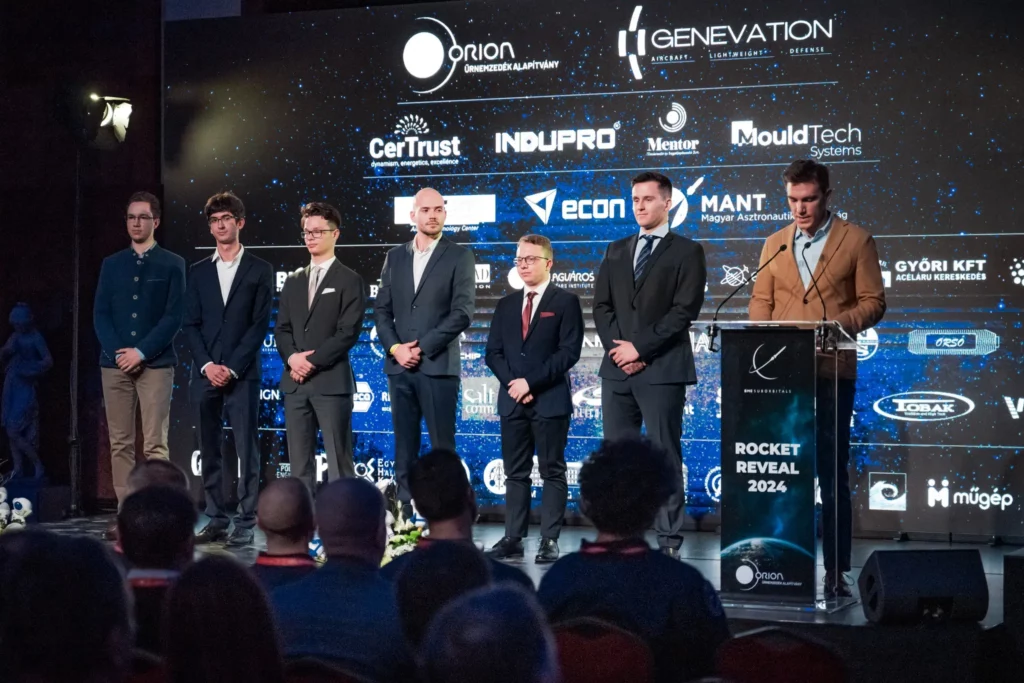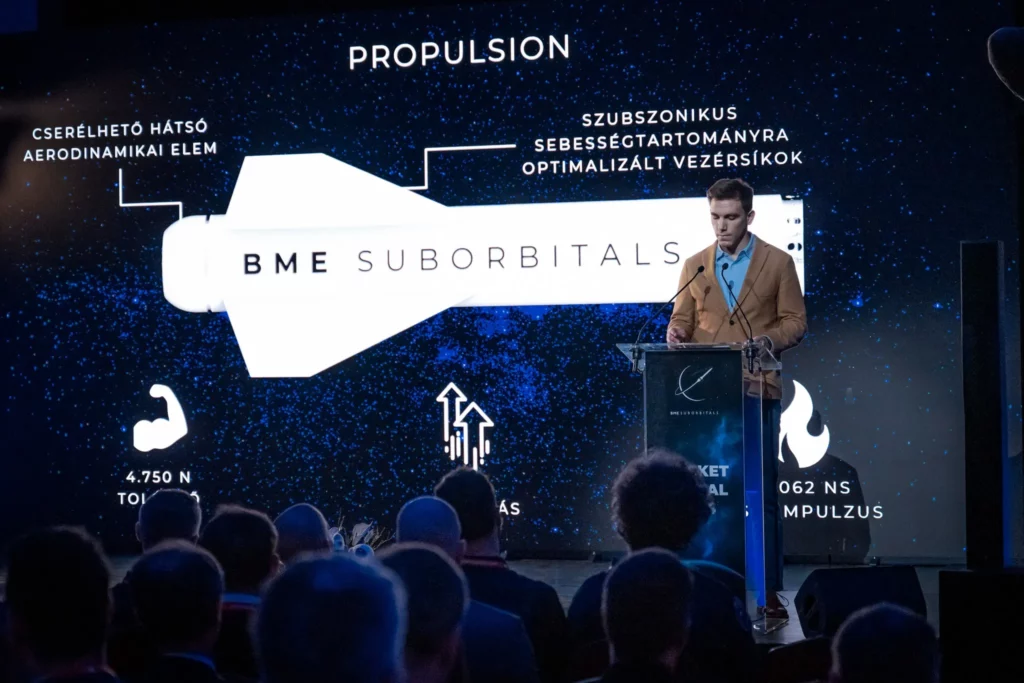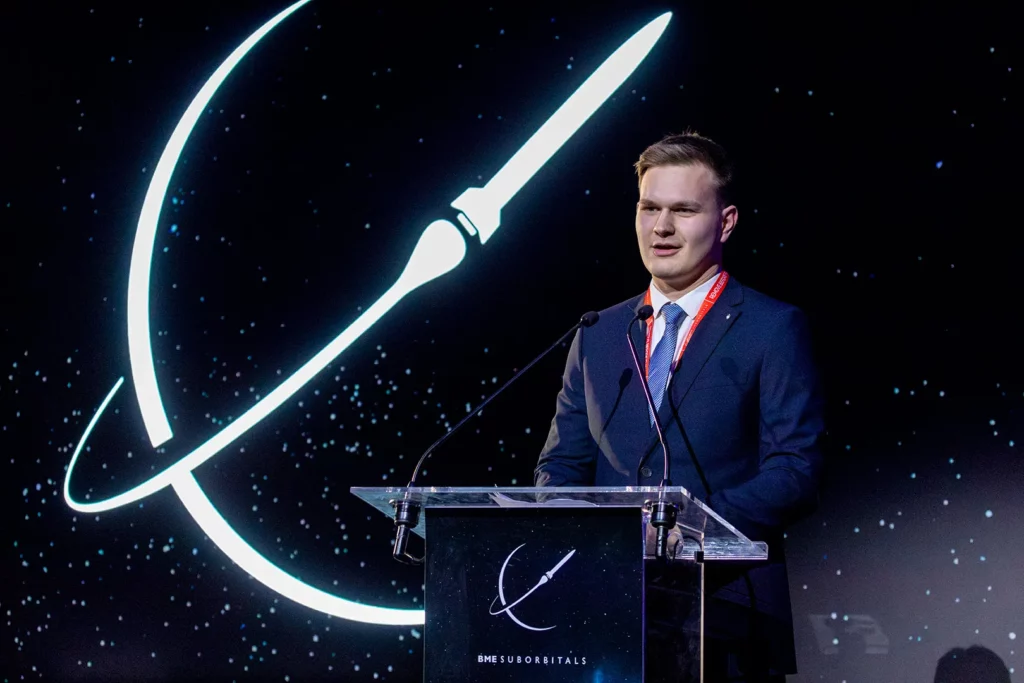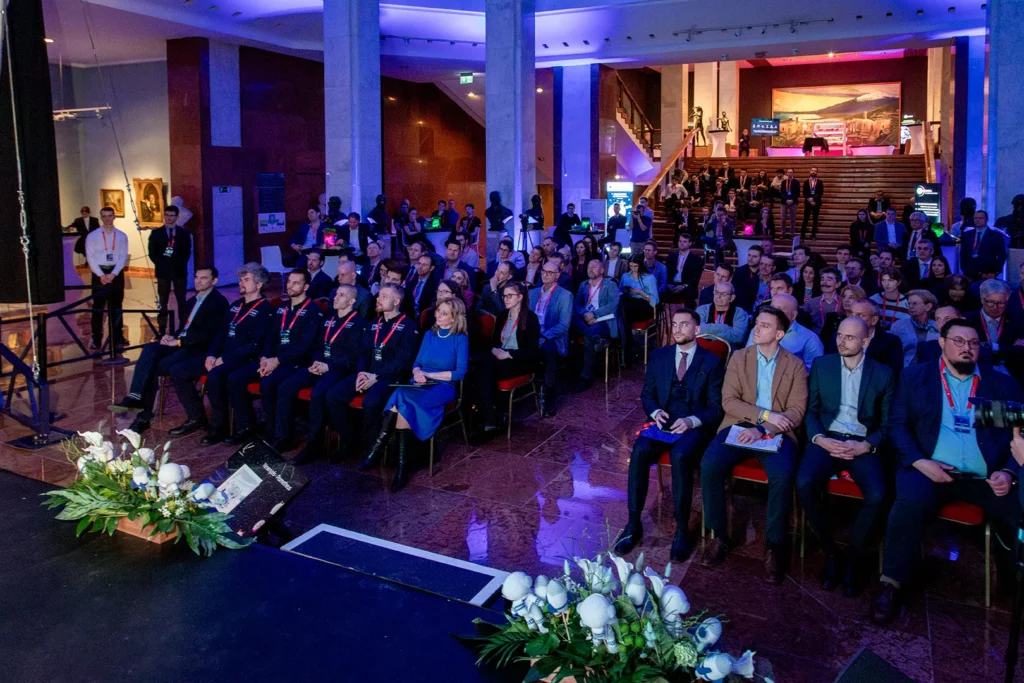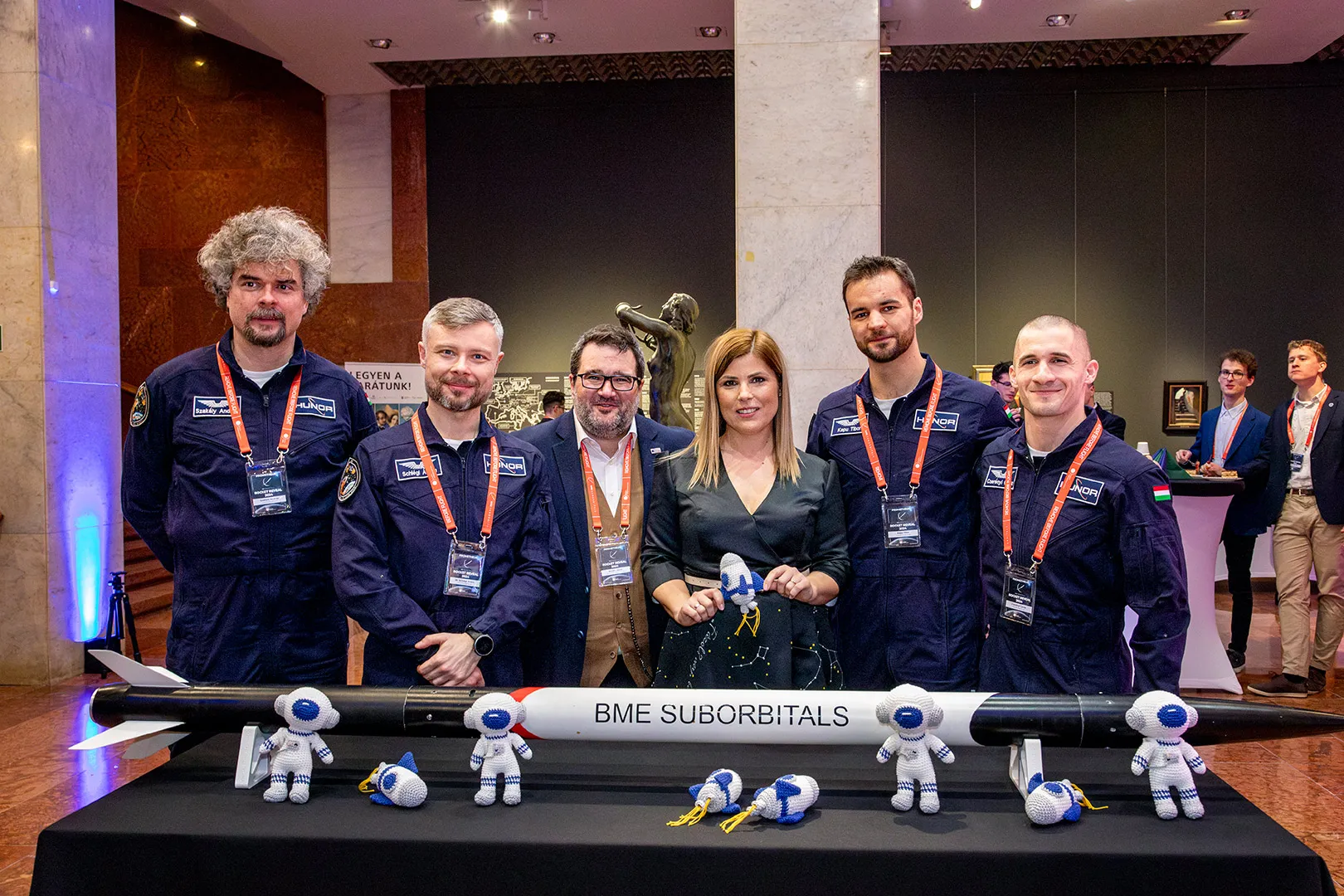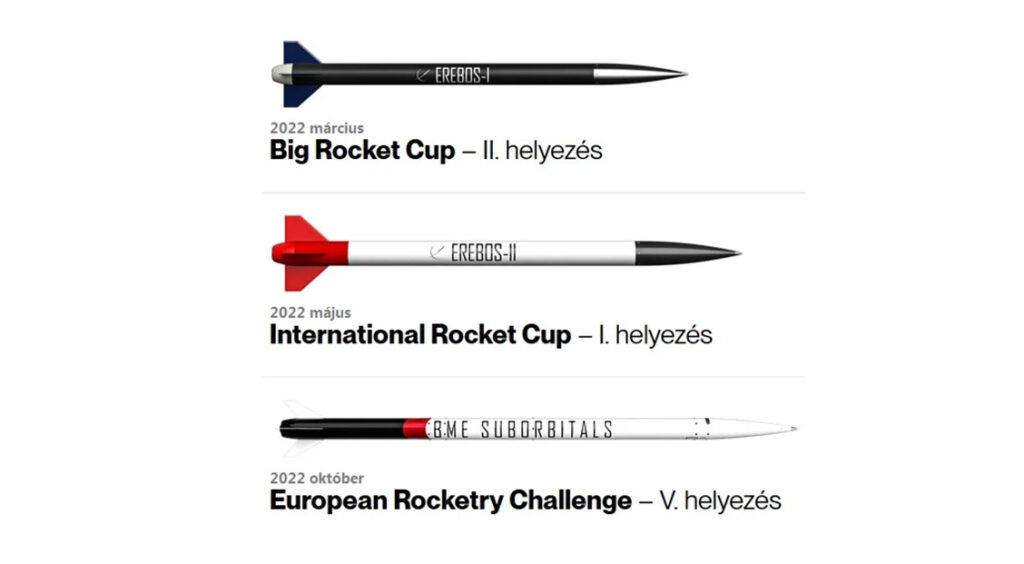Support for young talents
Our talent management efforts aim to help prepare and develop the next generation of talented space scientists. The innovations and achievements they bring will shape the future of space exploration and lay the foundations for further discoveries and achievements of mankind.
We are proud to be able to support the BME Suborbitals competition team, which is engaged in high-level research and development activities. The development of research rockets not only reflects the dedication and talent of the team, but also plays a key role in shaping the future of space exploration.
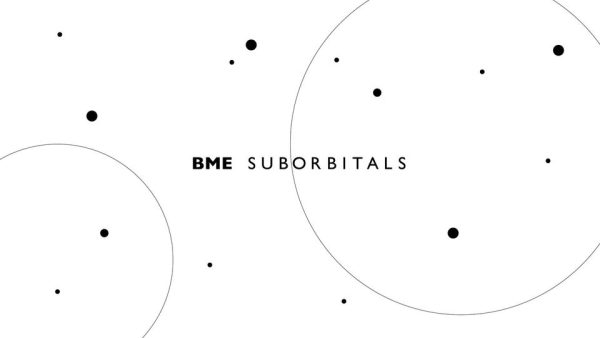
The BME Suborbitals rocket development competition team has been performing at a high level in various international competitions for years, and is also an increasingly important player in events related to the domestic space industry. On the evening of 12.02.2024, the presentation of their latest and biggest competition rocket, Prometheus, took place in a ceremonial setting within the walls of the Hungarian National Gallery.
The BME Suborbitals team – with its 40 members and outstanding achievements – can serve as a model for other similar projects. The ORION Space Generation Foundation encourages interested parties not only to support existing projects, but also to share their commitment and knowledge of space exploration with others.
If you would like to support a space project and thus contribute to the development of space exploration, please contact us.
We believe that for humanity, rockets are not just technology, but a kind of intellectual challenge, which is an expression of perseverance, innovation and human determination. The rocket not only takes you into outer space, but also pushes the limits of human possibilities…


Project TELLER
Three-axis Experimental Low-altitude Laboratory for Exploring Radiation
Introduction to the Hungarian experiment planned for the 2023 REXUS programme
REXUS is a Swedish-German project for university students and doctoral candidates, supported by the European Space Agency (ESA). The programme will allow 8-10 teams to launch an experiment on board a rocket to an altitude of 90-100 km, and to learn about ESA space industry standards and the space system development process. As students of the Budapest University of Technology and Economics with a Master’s course in space engineering, we saw this programme as a great opportunity to deepen our professional knowledge and to complement theory with practical experience.
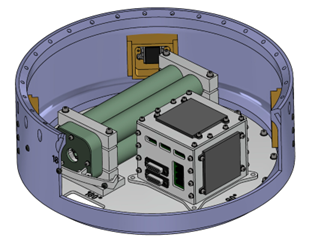
Experiment of Project TELLER
Project TELLER
Two Hungarian teams have previously participated in the REXUS programme. GEKKO in 2013 and REM-RED in 2015. Based on our participation in previous ESA-organised competitions and our experience in the development of the MRC-100 3PQ satellite, we started the current project. Several of us took part in the European Rocketry Challenge, also organised by ESA, in Portugal last October. During this competition, we had the opportunity to familiarise ourselves with the requirements of the European Space Agency, so we were not unfamiliar with ESA’s requirements.
In our REXUS experiment, we are developing a direction estimation radiation detector system, as the nature of the radiation at altitudes
of 30-100 km has not yet been fully mapped. We are able to measure the different radiation conditions below this region with meteorological balloons and above with satellites, but the band between the two is still to be explored. Perhaps the most interesting feature of our experiment is its ability to estimate the direction of the radiation. In addition to the scientific value, the newly launched Master’s programme in space engineering and the Hungarian space industry could also benefit from the project in the long term, as it could further enhance Hungarian scientific success in Europe and provide students with practical space industry experience to enter the workforce. Our team consists of 8 space engineering students, 1 physics student and 1 mechanical engineering student.
The design of the system is as follows: the experiment will be placed in a 300 mm diameter rocket segment. Along three axes, caesium iodide scintillator plates would be placed to detect different ionizing particles according to their energy and direction. In addition, 4
Geiger-Müller tubes are installed, as shown in the figure below. By connecting the 4 tubes to a coincidence circuit, we are able to
determine the direction of the incoming radiation depending on which 2 tubes have measured an incident (below each other/next to each
other/diagonally).



